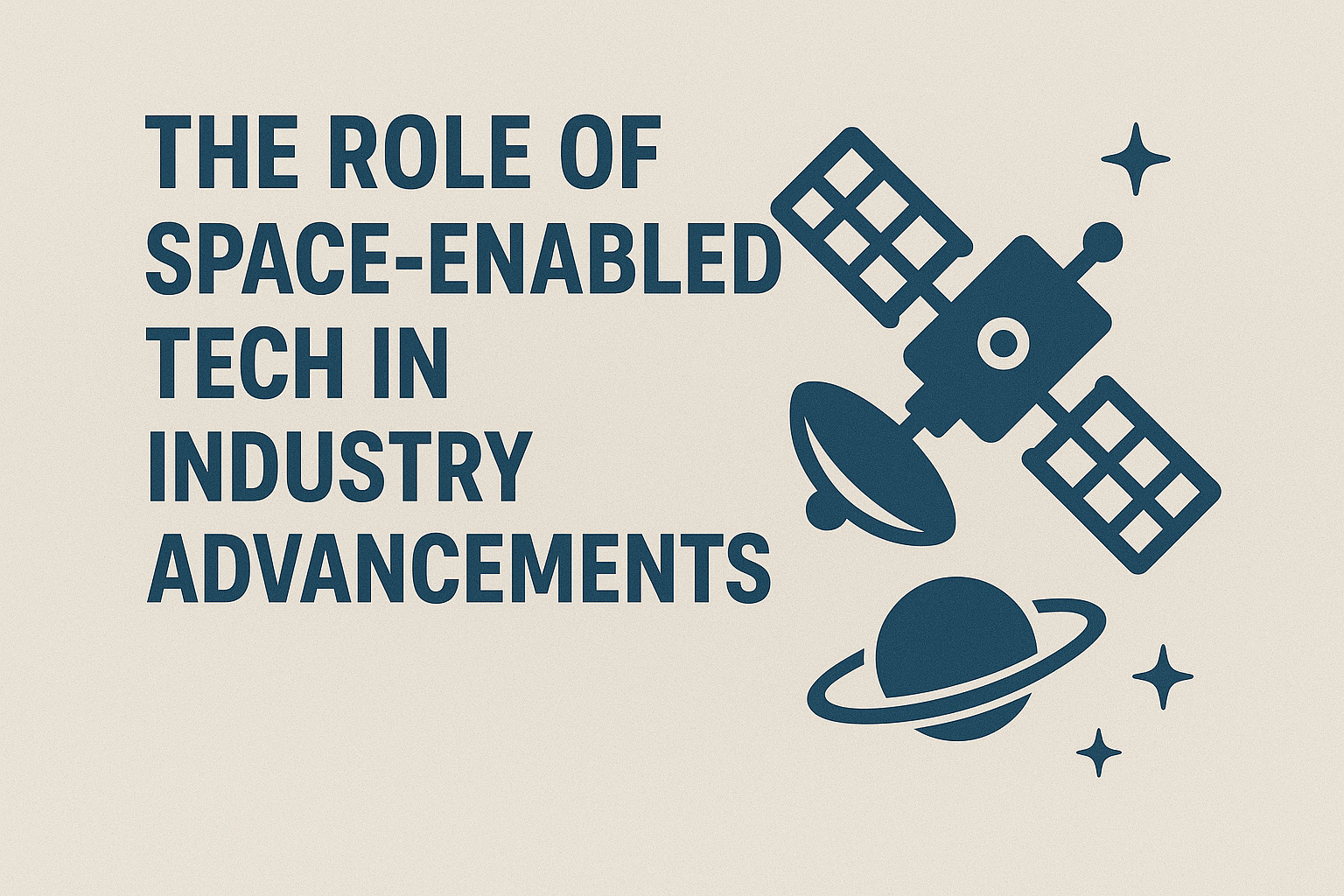The borderline of space, which was once the exclusive domain of national governments, has now quickly become a catalyst for global industry advancements on Earth. Space-enabled technology like satellites, launch systems, along with materials science born from the space environment, is no longer a distant goal, rather it is the essential engine driving efficiency, productivity, as well as sustainability across almost every commercial sector. This paradigm shift, which is usually termed the “New Space” economy, is creating a global market which is expected to witness exponential growth, with its benefits directly resulting in transformative real-world applications.
Precision and Efficiency: Earth Observation and GNSS
Two most prevalent space technologies currently are Earth Observation (EO) satellites and Global Navigation Satellite Systems (GNSS), including GPS, Galileo, as well as BeiDou. The above systems are capable of offering exceptional precision as well as real-time data which have greatly transformed industry operations.
- Agriculture (Precision Farming): EO satellites play an important role in offering farmers with high-resolution imagery as well as data on soil moisture, crop health, along with weather patterns. This helps in facilitating precision farming, where farmers can improve irrigation, fertilization, as well as pest control, which in turn contributes to higher yields, lower resource waste, along with more sustainable practices.
- Logistics and Transportation: GNSS is the main support of modern logistics. It plays an essential role in powering fleet management, real-time tracking of goods, as well as adjusting shipping routes for facilitating maximum fuel efficiency. The above factors help in considerably decreasing operating costs along with lowering the carbon footprint of global supply chains. The high-accuracy positioning which is offered by modern GNSS constellations is particularly very important for autonomous vehicles for ensuring safety as well as operation.
- Infrastructure Monitoring: Satellite imagery as well as synthetic aperture radar (SAR) can help engineers in remotely monitoring large-scale infrastructure like pipelines, bridges, as well as dams. SAR, which is capable of even penetrating cloud cover and operating day or night, is important for detecting minor land deformation long before it becomes a catastrophic failure, thereby improving preventive maintenance as well as safety in construction and energy sectors.
Connectivity and Resilience: The Communications Revolution
Satellite communication is essential for connecting remote localities, also the proliferation of group of low-Earth orbit (LEO) satellites is significantly building the telecommunications industry.
These LEO systems provide high-speed, low-latency broadband internet access virtually across the globe. Additionally, the system is essential for businesses in remote areas, maritime operations, as well as air travel. Furthermore, the space-based communication systems are essential for disaster management and situations when global communication networks fail due to a natural disaster, satellites are essential for coordinating emergency response and relief efforts.
Innovation Spin-offs and Materials Science
The demanding environment of space which includes extreme temperatures, radiation, and microgravity requires development of highly advanced, resilient, and miniaturized technologies. These innovations regularly revolve around the terrestrial applications which are driving advancement in distinct industries.
For instance, solar cells and durable, lightweight materials which were initially developed for spacecraft and are now used for renewable energy generation on Earth. Also, research is being conducted on the International Space Station (ISS) in microgravity, with the aim of facilitating developments in fields like pharmaceuticals as well as advanced manufacturing, where absence of gravity enables the growth of pure crystals as well as novel alloys, which are impossible to produce under normal Earth conditions.
Conclusion
The role of space-enabled technology in industry advancements is set only to increase. The decreasing cost of launching payloads, combined with the miniaturization of satellites and the increasing sophistication of data analytics (often integrating Artificial Intelligence), will unlock a new wave of services. The continuous flow of data from space is becoming a necessary resource, transforming how we manage our planet’s resources, operate global businesses, and build resilient, interconnected societies. Investing in space is more efficient and aid in technologically advanced future for industries on Earth.
